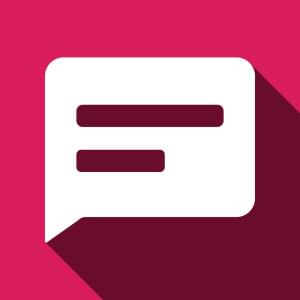 Following Microsoft’s legal agreement with the EU Commission, all European Internet Explorer users will be offered a choice of competing browsers on or shortly after March 1, 2010.
The “Browser Choice” screen (thankfully renamed from “Browser Ballot”) is appearing a couple of weeks ahead of the agreed schedule and testing has already started in the UK, France and Belgium. Microsoft has revealed the following details about the update:
1. The Browser Choice screen will be offered in Windows XP, Vista and 7 to users who have IE set as their default browser. It will be installed through the standard automatic update system.
2. Following installation, a new “Browser Choice” icon will appear on the desktop and the IE icon will be unpinned from the Windows 7 taskbar. An introduction screen will appear which explains what a browser is:
Following Microsoft’s legal agreement with the EU Commission, all European Internet Explorer users will be offered a choice of competing browsers on or shortly after March 1, 2010.
The “Browser Choice” screen (thankfully renamed from “Browser Ballot”) is appearing a couple of weeks ahead of the agreed schedule and testing has already started in the UK, France and Belgium. Microsoft has revealed the following details about the update:
1. The Browser Choice screen will be offered in Windows XP, Vista and 7 to users who have IE set as their default browser. It will be installed through the standard automatic update system.
2. Following installation, a new “Browser Choice” icon will appear on the desktop and the IE icon will be unpinned from the Windows 7 taskbar. An introduction screen will appear which explains what a browser is:
 3. The user can opt to select later or proceed to the browser choice screen:
3. The user can opt to select later or proceed to the browser choice screen:
 The five most popular browsers are shown in random order — IE, Firefox, Chrome, Safari and Opera. A further 7 randomly-ordered browsers are available if the user moves the horizontal scroll bar.
4. The system can download and install any number of browsers.
Here’s the best bit: IE6 and IE7 users will be prompted to upgrade to IE8!
The five most popular browsers are shown in random order — IE, Firefox, Chrome, Safari and Opera. A further 7 randomly-ordered browsers are available if the user moves the horizontal scroll bar.
4. The system can download and install any number of browsers.
Here’s the best bit: IE6 and IE7 users will be prompted to upgrade to IE8!
Winners and Losers
There’s one obvious loser: the browser choice screen is guaranteed to reduce IE’s market share. Fortunately for Microsoft, anyone uncertain by their choice will be reassured by that big blue ‘e’ icon. Firefox is perhaps the most familiar and already has a healthy 40% market share throughout Europe. It has the potential to overtake IE’s 45% of the market. Google Chrome usage is growing steadily and the company has been heavily advertising their browser in newspapers and on billboards. Many people will recognize the logo and the Google name could make it a big winner. Windows users who also have a Mac or an iPhone may be tempted to pick Safari. However, Apple don’t seem overly concerned about promoting their browser on Windows. Ironically, Opera — who instigated the anti-trust case — may not experience a significant rise. According to the StatCounter European statistics, its usage has halved from a peak of almost 9% in June 2009. It seems likely that Chrome and Safari have eaten into its market share. I also doubt the Opera name and logo will tempt many users when they’re faced with the choices. It will be interesting to see how the browser market is affected in the following months. Is IE your default browser? No — seriously?!! Will you be tempted to try an alternative browser when faced with the choice screen?Frequently Asked Questions (FAQs) about Microsoft’s European Browser Choice
What was the purpose of the European Browser Choice initiative by Microsoft?
The European Browser Choice was an initiative by Microsoft to comply with a 2009 ruling by the European Commission. The ruling was aimed at promoting competition and giving users more choice in the web browser they use. Microsoft was required to provide a screen to Windows users in Europe, offering them a choice of different web browsers instead of defaulting to Internet Explorer. This was to ensure that consumers had a fair choice of internet browsers, promoting competition and innovation in the market.
Why did Microsoft have to pay a fine to the EU?
Microsoft was fined €561 million by the European Union in 2013 because it failed to comply with the 2009 ruling. The company was supposed to display a Browser Choice Screen to Windows users in Europe, but it failed to do so for some 15 million installations of Windows 7 for a period of over a year between 2011 and 2012. This was considered a serious breach of agreement, leading to the hefty fine.
What browsers were included in the Browser Choice Screen?
The Browser Choice Screen included the five most popular web browsers (Internet Explorer, Mozilla Firefox, Google Chrome, Safari, and Opera) in a random order. It also displayed seven additional browsers (AOL, Maxthon, K-Meleon, Flock, Avant Browser, Sleipnir, and Slim Browser) in a separate section, also in a random order.
How did the Browser Choice Screen work?
When a user launched Internet Explorer for the first time, a Browser Choice Screen would appear. This screen displayed different web browsers that the user could install and use. The user could select one or more of the displayed browsers, after which the selected browsers would be downloaded and installed.
What was the impact of the Browser Choice initiative?
The Browser Choice initiative was aimed at promoting competition among web browsers. It gave users the freedom to choose the browser they preferred, rather than being limited to the default Internet Explorer. This led to increased competition in the browser market, encouraging innovation and development of new features.
Why was the Browser Choice Screen discontinued?
The Browser Choice Screen was discontinued in 2014 as Microsoft had fulfilled its obligations under the 2009 ruling by the European Commission. The ruling required Microsoft to display the Browser Choice Screen for a period of five years, which ended in December 2014.
What was the reaction of other browser makers to the Browser Choice initiative?
The reaction of other browser makers was generally positive. They welcomed the initiative as it gave them a level playing field and the opportunity to compete fairly with Internet Explorer. However, some critics argued that the initiative did not go far enough and that more should be done to promote competition in the browser market.
How did the Browser Choice initiative affect Internet Explorer’s market share?
The Browser Choice initiative led to a decrease in Internet Explorer’s market share in Europe. Users were given the freedom to choose other browsers, and many opted for alternatives like Google Chrome and Mozilla Firefox. This increased competition led to a decline in Internet Explorer’s dominance.
What lessons can be learned from the Browser Choice initiative?
The Browser Choice initiative highlights the importance of competition in promoting innovation and consumer choice. It shows that regulatory intervention can be effective in breaking down monopolies and promoting a level playing field. However, it also underscores the need for companies to comply with such rulings to avoid hefty fines.
What is the current state of the browser market in Europe?
The browser market in Europe is now more competitive than ever. Google Chrome is currently the most popular browser, followed by Mozilla Firefox and Safari. Internet Explorer’s market share has declined significantly, although it is still used by a small percentage of users. The market continues to evolve, with new browsers like Microsoft Edge and Brave gaining popularity.
Craig is a freelance UK web consultant who built his first page for IE2.0 in 1995. Since that time he's been advocating standards, accessibility, and best-practice HTML5 techniques. He's created enterprise specifications, websites and online applications for companies and organisations including the UK Parliament, the European Parliament, the Department of Energy & Climate Change, Microsoft, and more. He's written more than 1,000 articles for SitePoint and you can find him @craigbuckler.


